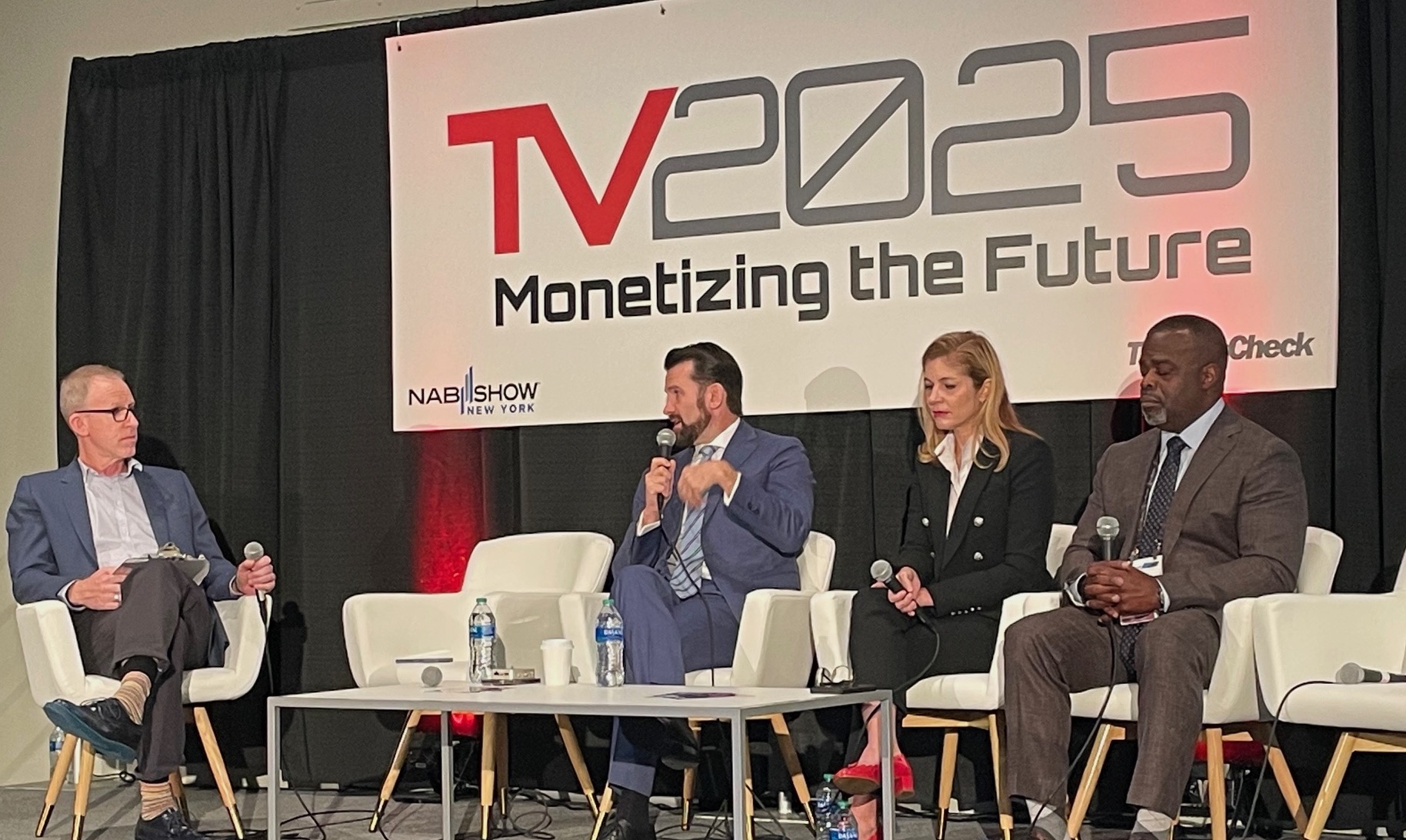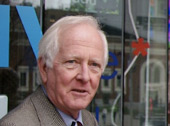NAB Show New York: Station Groups Optimistic Despite Current Challenges
Cross platform optimization the order of the day

NEW YORK—A favorable shift in the winds buffeting TV broadcasters lent some much-needed optimism to a candid front-office discussion at NAB New York that underscored the gravity of the challenges faced by station owners.
Fresh on everyone’s mind was the potential for an improved outlook resulting from the recent bundling agreement worked out in early September between Charter Communications and The Walt Disney Co. The deal, among other things, provides Charter’s Spectrum TV Select subscribers free access to Disney+ Basic and the ESPN direct-to-consumer (DTC) service when it launches sometime over the next two or three years.
The agreement was widely welcomed as a win/win for both companies by M&E analysts at UBS, Bank of America, MoffettNathanson, and other Wall St. firms, most of whom viewed it as a sign of things to come on a broader scale. As noted by Sinclair president and CEO Chris Ripley during TV Newscheck's "TV25: Monetizing the Future" conference at NAB Show New York last week, TV station owners see the precedent set by the deal as a win for them as well.
Ripley suggested the agreement portends movement toward “a great re-bundling” that could counter the marginalization of local broadcasting threatened by over-the-top (OTT) disruption. With a shift back to an emphasis on “a communal offering” where linear and on-demand services with and without ad support “all have a place,” everyone “benefits from being inside that bundle,” Ripley said.
Moreover, he added, the cross-platform bundling gets away from the DTC exclusivity that has drawn some of the best in episodic entertainment away from broadcast lineups. It’s important that serialized dramas “be put back into the bundle,” he said.
In fact, he noted, broadening access to such content isn’t just beneficial to broadcasters and their viewers. “DTC is a very expensive business model,” he said, which means getting into the communal flow is a boon to the OTT distributors as well.
These views echoed the take on the Disney/Charter pact expressed by Nextstar, the revenue leader in the station O&O market. In an investor report issued shortly after the agreement was announced, Nextstar said, “With DTC re-bundled, networks will be incentivized to add content to the broadcast network to maximize audience and advertising revenues versus making it exclusively available on DTC.” And TV stations will benefit from the likelihood that “providing more content that viewers want at a competitive/better price than the DTC bundle” will reduce cord cutting and high churn.
The professional video industry's #1 source for news, trends and product and tech information. Sign up below.
Disney also figures in another broadcast-affirming development involving the potential sale of the company’s eight ABC-affiliated TV stations, which stirred interest in the summer after Disney CEO Bob Iger publicly suggested Disney’s linear TV assets “may not be core” at a moment when the company is falling well short of investor expectations. Disney has since said it’s keeping its strategic options open but isn’t ready to commit to a sale.
Allen Media founder and CEO Byron Allen has confirmed his firm is willing to pay $10 billion for the stations packaged with Disney’s FX and National Geographic channels. “We believe broadcast is still a very viable business,” said Allen Media Broadcasting president Princell Hair, another participant in the NAB New York discussion.
Indeed, since launching the broadcasting division in 2019, Allen Media has acquired 27 ABC, CBS, NBC and Fox network station affiliates in 21 markets. But Hair, like the other speakers, wasn’t shy about enumerating the challenges station owners are confronting.
Top of mind is the need to add broader appeal to the programming lineup, especially when it comes to reaching younger viewers. Catherine Badalamente, president and CEO of Graham Media Group, which supports programming operations at seven stations in four states, cited a shortage of good syndicated content as a key issue during the NAB panel discussion.
“We have to figure out new ways to program stations,” Badalamente said. “Adding more news isn’t the solution.” Getting better programming into the mix might require new partnerships with other broadcasters, she added, commenting, “Nothing is off the table.”
While more news as currently presented may not be the answer, Chris Ripley said he sees a need for local news programming that has greater appeal to younger audiences with availability through a diversity of platforms. While “there’s nothing wrong” with Sinclair’s approach to delivering news to people who grew up watching television, “the reality is our audiences have changed over time,” he said. Young people want news, but they don’t “want to consume it the way we’re producing it.”
As for Allen Media Broadcasting, “The level of engagement is not what I’d like it to be in our markets,” Hair said. Like Ripley, he said the answer isn’t just a matter of battling for eyeballs with tweaks to the traditional programming lineup. “We have to keep an eye on where the consumer is,” he said, which means creating content that’s “unique to specific platforms.”
Both Sinclair and Allen Media are forging ahead along several paths in the multi-platform space, including new programming ventures and online services that offer news tied to local markets along with dozens of free ad-supported TV (FAST) channels and on-demand access to movie archives. Sinclair, which operates in 86 markets through 185 owned or affiliated stations, also runs NewsOn, a streaming service solely devoted to offering aggregations of local news content.
But anxieties centered on the core business persist as, in Ripley’s words, “every distributor becomes a virtual distributor.” With the marginalization of local TV threatened as MVPDs go to cloud-based national distribution, “we’re worried about getting knocked out of the bundle,” Badalamente said.
The panelists were unanimous in calling for stronger FCC support for preserving the role of local TV stations in the face of what Ripley described as the inevitable MVPD transition to virtualization. “This needs to be figured out,” Ripley said. Without federal support, he asserted, “there will be no broadcast industry in a world where every distributor is virtual.”
Hair called for more NAB lobbying pressure on behalf of protecting local TV against virtualization. “The NAB is the voice of the industry,” he said. “It has to be involved to help us resolve that.”
Fred Dawson, principal of the consulting firm Dawson Communications, has headed ventures tracking the technologies and trends shaping the evolution of electronic media and communications for over three decades. Prior to moving to full-time pursuit of his consulting business, Dawson served as CEO and editor of ScreenPlays Magazine, the trade publication he founded and ran from 2005 until it ceased publishing in 2021. At various points in his career he also served as vice president of editorial at Virgo Publishing, editorial director at Cahners, editor of Cablevision Magazine, and publisher of premium executive newsletters, including the Cable-Telco Report, the DBS Report, and Broadband Commerce & Technology.

